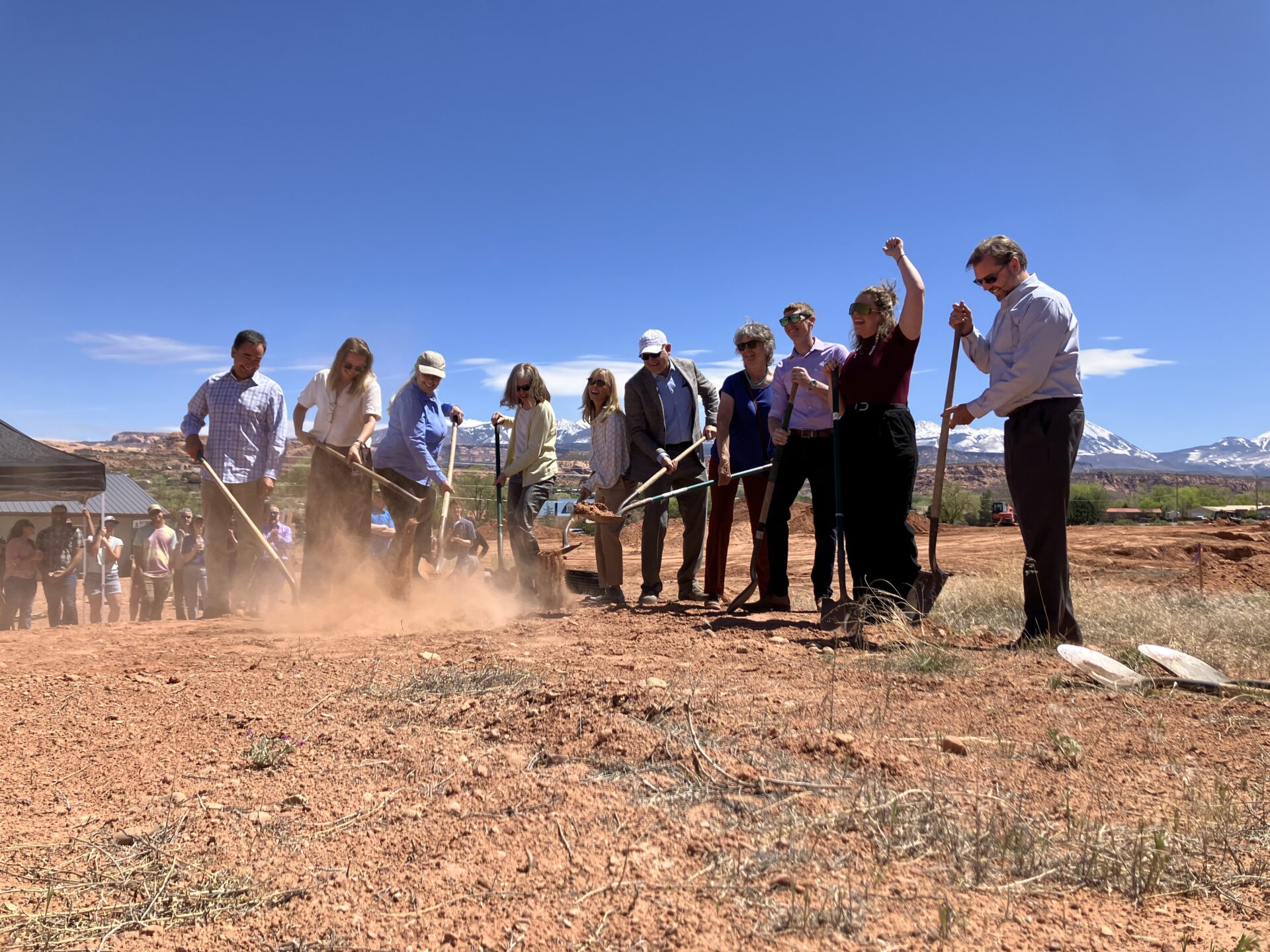The current economic health and future growth of Grand County is directly tied to its scenic public lands and the diverse range of recreational opportunities they afford, according to a new study from independent research group Headwaters Economics.
To a lesser extent, the region’s natural resources also play a role, and the key to a sustainable economic future for Grand County, according to the report, will be to strike a balance between the two.
The study, entitled “The Economic Value of Public Lands in Grand County,” examined a wide range of public land uses, including mining and agriculture, but focused on recreation and tourism because, as the report states, “this type of use represents the largest, most complex, and least well understood activity on public lands in the county.”
At Star Hall on Wednesday, March 4, study author Chris Mehl presented his findings to an assembled group of about 30, including some city and county council members.
“Grand County has a competitive advantage … a phenomenal confluence of natural amenities,” Mehl told the group.
Mehl said that the question for Grand County is how to maintain the competitive advantage that public lands offer by balancing a number of competing uses, including diverse types of recreation and resource development.
He said that the county’s economic diversity was in the many types of recreational users that come here, but that if those uses weren’t carefully managed, then one group could crowd out another.
“One key challenge facing Grand County leaders is how to maximize the long-term return for this valuable asset,” Mehl said.
The study reported that tourism supports 47 percent of the private jobs in Grand County, but that employment in other areas such as finance, insurance, health care, and professional and technical services had grown faster than the overall increase in employment between 2001 and 2013.
Jobs related to mining and oil and gas development accounted for just 2 percent of the private jobs in Grand County, according to the study.
Household per capita incomes in Grand County have also risen from $28,514 in 2000 to $40,545 in 2013, the study reported. Non-labor income, much of it retirement related, grew by 77 percent during the same time period, contributing nearly $77 million to the local economy.
The study also showed that non-metro communities with greater areas of protected public lands had higher per capita incomes than those with less, and that quality of life values were great attractors for professionals, entrepreneurs and retirees.
Additional amenities found to enhance to economic health included access to higher education and training, more housing, as well as connectivity with larger cities through increased airport services.
Grand County Council chair Elizabeth Tubbs said that she found the information useful, but said she wasn’t sure how county officials would use it at this time.
“The information presented was primarily a statistical model which undoubtedly provides some good data, but doesn’t tease out the specific issues we face in Grand County,” she said.
Tubbs said there were some discrepancies between the information she has heard from local sources, particularly regarding the number of jobs in the mining sector, and she also had reservations about the reported rise in incomes.
“When I hear that incomes have risen over the past 15 years or so, it’s meaningless unless we also look at cost of living,” she said.
Tubbs said she planned to review the data in greater detail, and said that the council, through the Public Lands Initiative, was working to come up with a plan that would manage a diverse range of visitor experiences, along with resource development.
“I believe that tourism and outdoor recreation provide a solid foundation for the economy of Grand County,” she said. “At the same time, mining and extraction industries provide jobs and revenue for the county that we can hardly scoff at.”
Moab City Council member Gregg Stucki told the Moab Sun News that he thought the presentation was well done.
“I think there is some valuable information that could be gleaned from this report, and it could be useful as we look toward the future,” Stucki said.
Stucki said he was surprised at the rise in median incomes and at the growth of the professional sector. He also noted that even though mineral extraction doesn’t create a lot of jobs, it does generate 10 percent of the tax revenue received. Ultimately, he said, a balance needs to be struck between the recreation economy, land preservation and extraction.
“There is no doubt that the spectacular scenery that surrounds us is important to our local economy,” he said. “And there may very well be specific areas that need additional protection, but the approach needs to be reasonable, not radical. Responsible resource development, recreation and preservation can co-exist within the expansive bounds of this county.”
Grand County resident Wayne Hoskisson said the idea of preservation goes beyond economics. But the report adds one more important piece of information to the debate, he said.
“It shows that preserving or protecting lands does not result in economic collapse or impoverishment of communities,” he said.
Hoskisson also said that there is a societal cost that comes from a high level of tourism, including overcrowding and the doubling of the town’s population during the tourist season.
“At some point, you have to decide what the spiritual value is,” he said.
Mehl said that Grand County has some decisions to make when it comes to balancing the values of recreation, land protection and resource extraction in order to continue to grow the economy.
“You have difficult choices and they are going to be painful choices,” he said. “But you are starting from a good place.”
Balance between competing uses a must
“One key challenge facing Grand County leaders is how to maximize the long-term return for this valuable asset”
To see the report on the Economic Value of Public Lands in Grand County, go to http://headwaterseconomics.org/land/economic-grand-county.



